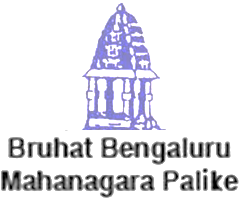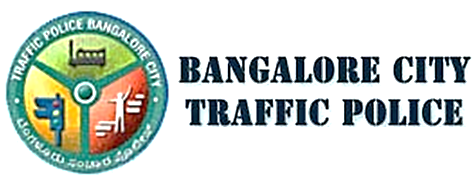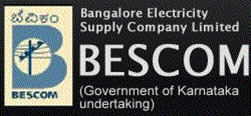HOT TOPICS
SPOTLIGHT AGENCIES
The need for BRTS
Written By Naveen - 26 March, 2008
Traffic Bangalore CTTP CDP BMTC Analysis public transport Metro Rail
This refers to the article in TOI & the guest column by Muralidhar Rao.
The basic premise on which public transport is based is that if the road seems too narrow with high volumes of traffic, there is a case for public transport. The higher the volume of traffic on a road, the stronger is the case for public transport.
In India, the low–cost /low–quality public buses are now not preferred by the upwardly mobile strata. Rail-based systems (such as Metro /Monorail) are very expensive to build & maintain & will therefore, not have extensive reach for a long time to come. The city cannot make do with widening roads & adding elevated roads continuously. No city has ever been able to “build” its way out of the problem. A new, faster & cost efficient system is required for quality conscious groups, over & above the existing low quality bus network. BRTS fulfills these requirements & is perhaps, the only available alternative worth exploring.
BRT systems with high-quality service features have been developed in several cities such as Bogota (Colombia), Curitiba (Brazil), Guayaquil (Ecuador), Jakarta (Indonesia), Pereira (Colombia), Brisbane (Australia), Ottawa (Canada), and Rouen (France). Approximately 40 cities have already implemented BRT systems, and many more such systems are either in various planning stages or are under construction. Unlike low quality public transport buses in India, the BRT concept includes high-quality infrastructure, efficient operations, effective & transparent business & institutional arrangements, sophisticated technology, and excellence in marketing and customer service. The Bogota system (TransMilleno), one of the most successful BRT experiments, is currently carrying 45,000 passengers each direction in peak hours. This is nearly the same as a well used Metro system in peak hours.
A standard BRTS lane requires about 3.5 mtrs of road width. Thus, a twin lane system with a single lane in each direction & a median requires about 9-10 mtrs (about 33 ft). At bus stops, the width required would be higher to allow an additional lane for overtaking (express buses may also be operated within the network) & for building infrastructure such as bus stations, ticket kiosks, etc. Where road widths are insufficient, BRT–exclusive elevated over or under passes are normally fitted & at signals, BRT is usually given priority & right of way.
There are certain obstacles, though. Private vehicle users are mostly educated & therefore, vocal & demanding. Their numbers are growing with migration to the bigger cities that offer more & more jobs. The authorities have ignored basic transport concepts & alternatives consistently due to pressure from vehicle owners. Thus, almost all decisions by authorities on road infrastructure development have unfortunately been to cater to more private vehicle usage. BRTS is only now being introduced in the country & experience /expertise in operating such a system within the country is unavailable. Road widths in most Indian cities (except Delhi) are not too large. The degree of involvement of the private sector in public transport is negligible, save for operating inter-city bus services & a few intra-city bus services. Most private vehicle users & observers see the BRTS as wastage of road space. They do not realize that such space is well worth utilizing for BRTS since the bus service, when improved, if not perfected will eventually make the city more efficient & cater to a much larger commuting populace, actually quite similar to construction of a flyover or an elevated road.
Hence, a start has to be made & in due time, BRTS has the potential to replace very large numbers of private vehicles. This obviously, is not expected to happen quickly, but over a period. The CTTP-2007 has recommended four viable corridors (appx 60km) within ORR as also along the eastern part of ORR (33km). What is required immediately is for the authorities to pursue the system at the earliest in order to gain experience & learn as the system will be subject to extensions & improvements. Ignoring this mode of public transport will surely worsen traffic conditions as there are no alternatives worth considering.
COMMENTS

BRT on one way roads should be easy compared to 2 way roads
Vasanth - 26 June, 2008 - 17:34

murali772 - 28 March, 2008 - 10:31

murali772 - 26 March, 2008 - 16:58

Naveen - 27 March, 2008 - 10:31
Mr Murali - Greetings & noted various articles in your blogspot about Traffic & Transport Issues – thanks.
As you mentioned, I believe that public transport is too vital for the government alone to operate single-handedly. BMTC is just about recovering its operating costs now after the turn-around a few years ago. Whilst there is no doubt that our public transport systems could do better with competition, the question really is which large, professional body would come forward & volunteer to operate public transport services, given the dismal state of affairs as it is today ? If a business like approach is to be adapted for tendering these services, they would have to assure returns & profitability, failing which subsidies will have to be doled out with the loss of revenues.
What we require in Bangalore & in all our cities in general, is a car-competitive public transport that delivers efficiently based on some calculus that results in lower price, shorter travel time, comfort & convenience. BRT systems are designed to compete with cars & their characteristics & features set them apart from conventional bus services. Introducing such a system will also undo the long-held biases in favor of private vehicles & make them efficient & better alternatives than individual motor vehicles.
A large no. of vehicles (appx 200 per km, as estimated) would be displaced if BRTS lanes were built within available road space, & wide roads seem scarce in the city with the excessive no. of vehicles. The CTTP-2007 report has hence recommended BRTS only on certain roads to start with (ORR, CRR, IRR, etc.) where widths are sufficient. The real point is that if a certain no. of vehicles are displaced, the buses that are being run on these lanes will in due time be able to carry several times more passengers than all these displaced cars put together. Also, emission from a fewer no. of hi-tech buses would be far lesser than from the several hundred cars that they displace. The BRTS concept has gained favor amongst policy planners overseas based on these advantages. Average speeds up to 30 kms have been achieved.
In India, at Ahmedabad, BRTS is being planned to operate in exclusive lanes where road widths allow for this & in mixed traffic lanes where roads are narrow. Also, in some cases, to bypass signals, the exclusive bus-ways terminate about 50 mtrs before the junction & the buses turn into a suitable secondary road. Direct, point to point services are arranged to minimize transfers & to attract more commuters & for the project to be financially viable. The infrastructure costs are being met by the municipality whilst PPP models are being pursued for operating the fleet.
A similar model can be suitable for Bangalore & when the concept is better understood & gains acceptance, controlling traffic volumes can become easier. I beleive that BRT, together with the Metro /Monorail & introduction of traffic restraining tools (such as high parking fees, congestion /cordon pricing, etc) can successfully divert private vehicle users to public modes of commuting.

asj - 26 June, 2008 - 16:06
Most are aware of my thoughts on the matter. I have now managed to put them together as one article though reference is still made to several case examples I have compiled over time (reason being rather than just complaining I find offering alternatives just as improtant).
Please read - http://better.pune.googlepages.com/WhyBRTinIndiadoesnotexciteme.htm
Thanks
ASJ
PRAJA.IN COMMENT GUIDELINES
Posting Guidelines apply for comments as well. No foul language, hate mongering or personal attacks. If criticizing third person or an authority, you must be fact based, as constructive as possible, and use gentle words. Avoid going off-topic no matter how nice your comment is. Moderators reserve the right to either edit or simply delete comments that don't meet these guidelines. If you are nice enough to realize you violated the guidelines, please save Moderators some time by editing and fixing yourself. Thanks!





